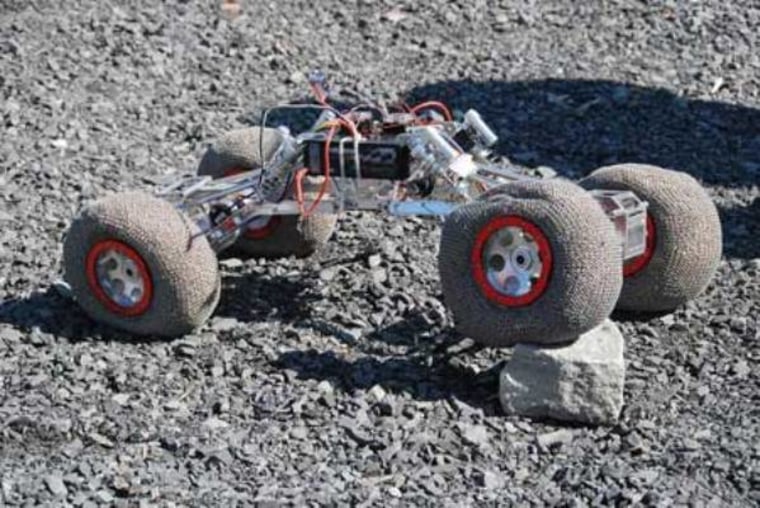Driving on the moon isn't as easy as shifting into first gear and putting the pedal to the metal. One team's solution to the challenge is to create wheels as sturdy as armor and as mushy as a bean-bag chair.
Researchers from Canada's McGill University have received a piece of an $11.5 million contract from the Canadian Space Agency to develop the wheel, dubbed iRing. The wheel is made of an external chainmail fabric (think medieval armor) and filled with granular particulate matter. "This distinctive design provides both flexibility and sturdiness when traveling over extremely bumpy lunar terrain," the university says.
Videos of the wheel prototypes demonstrate how its shock-absorbing characteristics reduce requirements for the rover suspension system, give it the grip necessary to climb walls, and conform to the surface they roll over.
The Canadian Space Agency contract was awarded to Neptec Design Group, which has offices in Ottawa and Houston, to build a Lunar Exploration Light Rover. This rover "will be capable of a variety of functions, including exploration, mapping of the lunar surface, drilling for water, excavation, preparation of landing sites for lunar landers and transporting astronauts to their lunar bases," according to the Neptec team.
The rover is one a few dozen under development around the world for a new era of exploration on the moon.
Lunar X Prize update
More than 20 of the teams working on these rovers are participating in the Google Lunar X Prize, a $30 million competition to land a robot on the moon and have it travel more than 500 meters (a third of a mile) on the surface as well as send images and data back to Earth.
Whether the Canadian rover is part of this competition remains to be seen. A likely disqualifier is its government funding, which is limited to 10 percent of the money needed to complete the mission, according to William Pomerantz, senior director of space prizes for the X Prize Foundation.
Registration for the competition closed on New Year's Eve. As the window closed, 21 teams had fully registered and 10 were partially registered. The last-minute completed applications are still under review. A final roster will be published in a few weeks.
"We were very, very pleased with the number, quality, and diversity of registrations we received right at the end," Pomerantz told me today via e-mail.
For more information on the Google Lunar X Prize, check out the stories below.
- Google funds $30 million moon prize
- Teams go after moon money
- Astrobiotic reveals moon mission plans
- Private race to the moon (and money) takes off
- Moon rocketeers take one small step, on Isle of Man
John Roach is a contributing writer for msnbc.com. Connect with the Cosmic Log community by hitting the "like" button on the Cosmic Log Facebook page or following msnbc.com's science editor, Alan Boyle, on Twitter (@b0yle).
